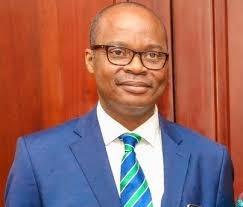Ghana’s economy grew by 6.6 percent and 9.0 percent in the first and second quarter of 2017 respectively, the Governor of Bank of Ghana, Dr. Ernest Addison has stated.
Addressing a news conference Monday after the bank’s 79th regular meeting of the Monetary Policy Committee (MPC), Dr. Addison added that the growth of the economy is projected to 7.9percent driven largely by the oil sector. He said the non-oil GDP growth was 3.9 percent in the first quarter and 4.0 percent in the second quarter.
“Meanwhile, the Bank’s updated Composite Index of Economic Activity recorded an annual growth of 3.2 percent in September 2017, compared to 3.1 percent in the same period last year,” he stated.
He continued that the bank’s latest confidence surveys conducted in October pointed to improved business and consumer confidence in the economy, reflecting favorable prospects for the industry, household’s financial situation and improvement in the general economic environment.
Dr. Addison further disclosed that developments in the monetary aggregates showed increased total liquidity in the economy, mainly driven by net foreign assets of the Bank of Ghana.
Broad money supply (M2+), he said grew by 22.6 percent on a year-on-year basis in October 2017, relative to 19.8 percent annual growth a year ago. Deposit Money Bank’s credit to the private sector continued to expand, he added but at a slower pace, recording an annual growth of 9.4 percent as against a growth of 12.1 percent over the same comparative period.
Strengthening global growth
Trouncing on the Global growth, he said it has strengthened further since the last MPC meeting, sustained by strong growth in demand and recovery in investments and trade.
The recovery process, he further pointed out has also expanded beyond advanced economies to include large emerging market economies.
“Growth in sub-Saharan Africa is also slowly rebounding. The improved global growth conditions notwithstanding, inflation remains subdued.
“Although the US Fed has started trimming its balance sheet with the possibility of rate increases in December and in 2018, monetary policy in other advanced countries remains broadly accommodative. These favorable external conditions could impact positively on the domestic economy through the financing and trade channels,” said Dr. Addison.
Price developments, during the first 10 months of the year continued to show signs of dampening inflation expectations he said with headline inflation measured by the consumer price index being at 11.6 percent for October 2017, a reflection of a steady decline in inflation since the beginning of the year with the exception of April and August, when inflation ticked up slightly.
“All the Bank’s indices of core inflation continued to decline in October, pointing to a downward trend in underlying inflation, well within or close to the end year inflation target,” he said.
“Also Prices of Ghana’s major export commodities continued to firm up in the international commodities market. In particular, crude oil prices have strengthened in recent weeks reflecting geopolitical tensions, supply constraints, and strong demand.
Also, the price of gold moderated slightly, though still high, as the global economic recovery gained traction. However, cocoa prices remain depressed by excess supply due to favorable weather patterns across the West African sub-region,” he added.
Click to view details



Business News of Tuesday, 28 November 2017
Source: starrfmonline.com
Economy grew by 6.6, 9% in 1st and 2nd quarter – BoG
 Dr. Ernest Addison, Governor of Bank of Ghana
Dr. Ernest Addison, Governor of Bank of Ghana
Entertainment















